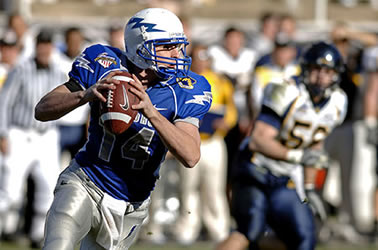Introduction
In a previous lesson, we focused on one-dimensional motion, which is motion in a straight line. This type of motion can be represented by:
- a straight horizontal line (like along the x-axis of a graph)
- a straight vertical line (like along the y-axis of a graph)
While an understanding of one-dimensional motion is important, you should also realize that most real-life motion is a little more complicated than just a straight line. Most real-life motion occurs as two-dimensional motion, which is motion in two directions.

For example, when you throw a football, it moves in two directions — both vertically and horizontally — at the same time. In this lesson, we will focus on different types of two-dimensional motion.
| Lesson Objectives |
|
Following successful completion of this lesson, students will be able to...
Enduring Understandings
The above objectives correspond with the Alabama Course of Study: Physical Science standards: 7. This lesson incorporates the following Literacy Standards: R1, R2, R3, R4, R5, R6, R10, W1, W2, W3, W4, W9, and W10. |
